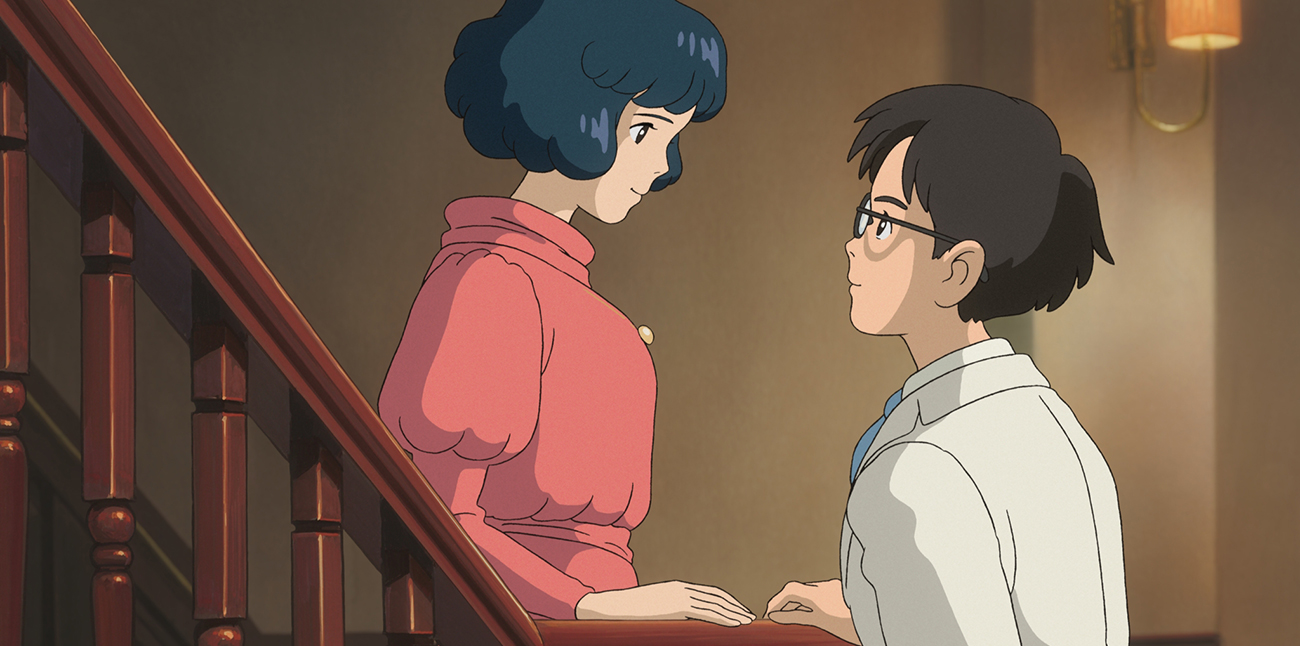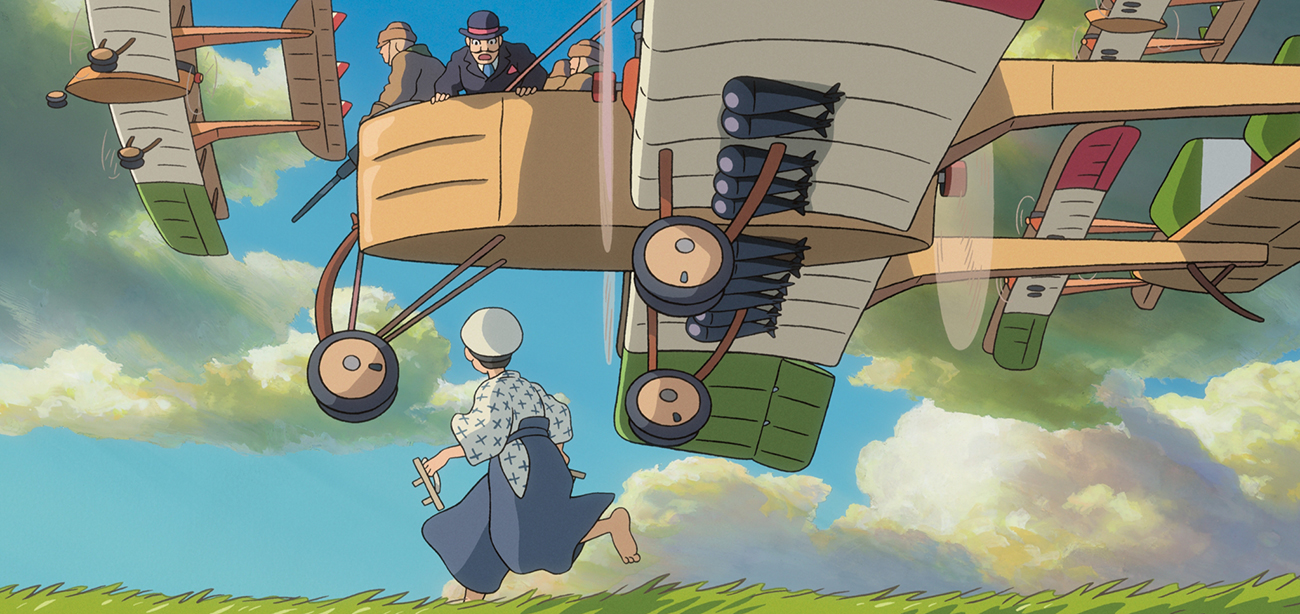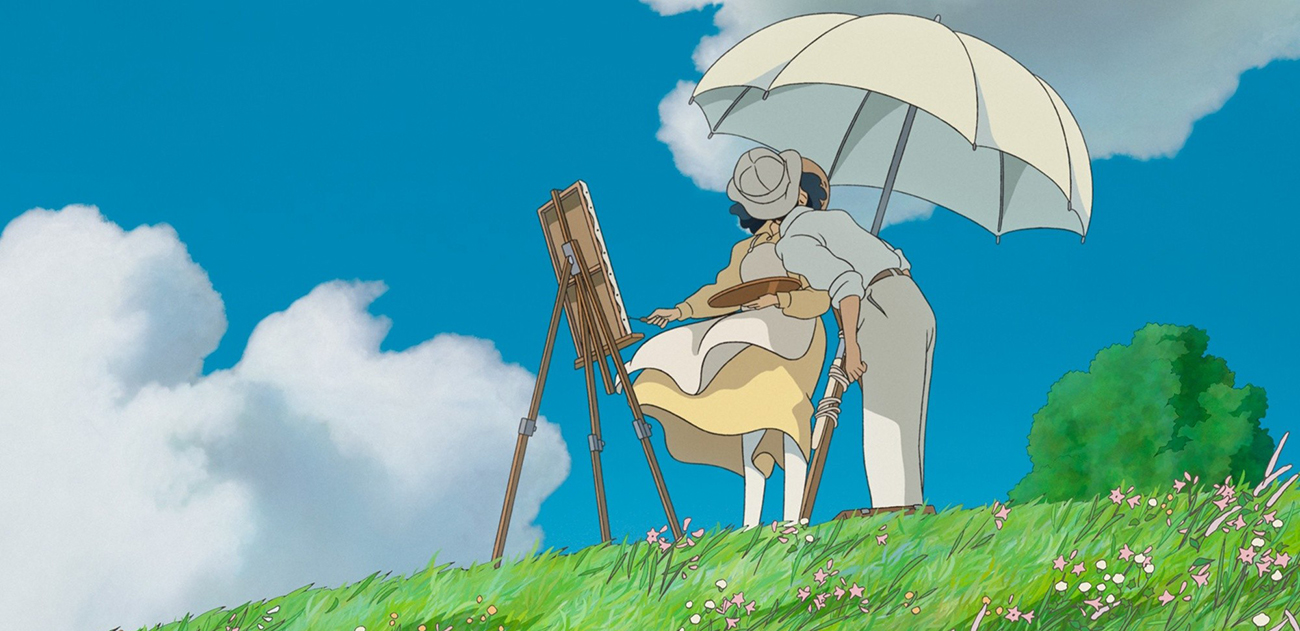Well having blitzed the box office back in 2013 when first released in Japan, Aussies finally get to access The Wind Rises on DVD and Blu-ray, some 18 months later. A lot has happened in Studio Ghibli land since then. We know that this indeed is Hayao Miyazaki’s last film ever – he has retired and it looks like the studio has ceased feature animation production also. It is Miyozaki’s last film since Ponyo and took four years to produce.
As a result, a lot of commemoration DVD/Blu-ray box sets and packages have been released around the studio’s classic films. This release is not one of those. The Australian Blu-ray release of Miyazaki’s final feature is a standard release with no bells and whistles and no fancy designs with collectible bits within but it’s menu does have a few points of interest. Importantly it has the option to play the movie in Japanese with English subtitles which will surely please purists who might have missed the opportunity to see the film in the original Japanese language track when it was released in cinemas. Of course it also has English audio plus English audio with English subtitles for the hearing impaired.
Featurettes include an option to watch the film with storyboards plus some other extras like the press conference with the director after the Japanese release and ‘Behind the Microphone’ a behind-the-scenes look on directing the English-language voice cast.

I first came to Miyazaki’s and Studio Ghibli’s films through my children. I heard on the grapevine about these extraordinary Japanese animations that kids just fell in love with. While this was true, they had also failed to say that I would love them too. So when it came to seeing The Wind Rises, by this time I was no stranger to Miyazaki. I was in love with the fantastical according to the Studio Ghibli but I was not ready nor used to seeing a Miyazaki biopic. This was fresh.
The Wind Rises is certainly no My Neighbor Totoro, nor a Kiki’s Delivery Service and certainly not a Ponyo but it nevertheless is unmistakably a Miyazaki picture. The Wind Rises is much more a biography, albeit a fictionalised one, and it tells the story of a famous man whose achievements had a dramatic effect on the world.
Long before 2002 when George Bush declared Iran, Iraq and North Korea as the ‘axis of evil’ there was the original band of three: Germany, Italy and Japan. Together, these three countries wreaked havoc on the world culminating in a second World War which was dominated by their military strength, in particular their superiority in the air.
Miyazaki’s final feature focuses on the story of Jiro Horikoshi, one of three brilliant aeronatucal enginers who helped design and develop groundbreaking aircraft that were used in World War 2. The other two engineers, Giovanni Caproni and Dr Hugo Junkers – hailing from Italy and Germany respectively – are also seen in the film and play very influential roles in the creation of Horikoshi’s Zero fighter – the plane that would be used in the attacks on Pearl Harbour.

Watched as a pure historical biopic, The Wind Rises offers an informative though slightly dry affair that lets viewers in on the pre-war machinations of Japanese industrialisation. But of course coming from Studio Ghibli and the pen of Miyazaki this is but just one element, one of a multitude of angles that make up this film.
Hayao Miyazaki’s trademark of the fantastical is present in this film in the form of Jiro’s dreams. Not just his aspirations for his designs but his real dreams that he shares with the legendary Italian designer Giovanni Caproni. Together they explore and discuss aircraft design and they philosophise about the righteousness of their work in the face of the known outcome and uses for their creations. “Do you want a world with pyramids or a world with none?” Caproni asks Jiro. Essentially, he is asking him that although Jiro knows his planes will be used as weapons of war, could he live on if he didn’t design them. Though they both understand the intended use of their planes, both engineers love designing flying machines and are compelled by the beauty of flight.In some ways, it smacks of a justification that these geniuses had no choice; much like how the artist is compelled to paint or face certain death. Though Caproni and Jiro canvases were a lot more lethal. This is a recurrent theme throughout the film and is particularly interesting when paralleled with Japan’s current political climate and flirtations with nationalism. Is this the Studio’s Prime Minister paying respect at his Yasukuni Shrine?
Another unmistakable Miyazaki trait is the sheer beauty of his animation; it is extraordinary and has been the foundation of the Studio Ghibli trade. Panoramic shots of the landscape and the changing weather, the wind rising and the rain coming are just so beautiful to watch; they are mesmerizing and I doubt whether such shots such as these could be captured on live action cinematography. The colours, the composition and the movement all combine to create the magic that is uniquely Miyazaki. Its aesthetic alone can compel viewers from start to finish but again they are just another part that make up the whole.

In addition to The Wind Rises many planes, the film also offers plenty in the way of trains. Many scenes of train travel, trains within dreams and trains across the landscape as well as the inclusion of steam trains slowly yielding to diesel trains offer a subtle chronological indicator plus a beautifully contrast to the transport of the sky.
Meanwhile, giving the film some real emotion is the love story of Jiro and his wife. From the heroic initial meeting, to the serendipity of their reconnection and from the mutual inspiration and influence to the tragedy of her ailment and the triumph of his success, The Wind Rises‘s love story within the story gives the film its heart.
Be it political, aesthetic, fantastical, romantic or all of the above, no matter how you read The Wind Rises remains a solid film though it can hardly be considered Miyazaki’s nor the Studio’s strongest film especially given that it runs a tad over its slow two hours. It mightn’t be the swan song fans of Miyazaki would liked to have envisaged but this is it and it will stand proud in a stable of a remarkable career.
Farewell and thank you, Hayao Miyazaki.
The Wind Rises is now available to own on DVD and Blu-ray thanks to Madman Entertainment.
